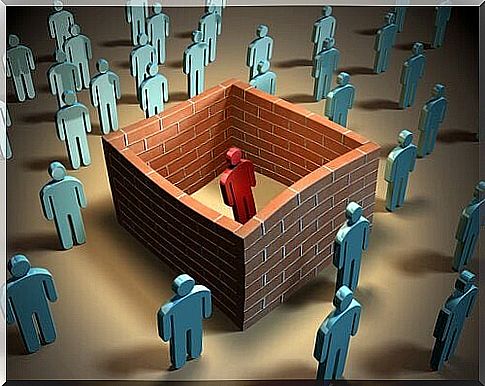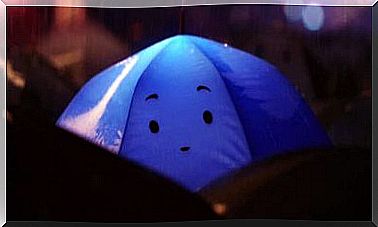Hikikomori: The Syndrome Of Social Isolation

In recent years, there has been a worrying increase in the number of young people with social isolation syndrome. This phenomenon is characterized by voluntary isolation and loneliness. Therefore, these people seek extreme isolation because they perceive the outside world as hostile, violent and aggressive.
This syndrome was originally known as hikikomori, which in Japanese means to be confined. This term was created by Japanese psychiatrist Tamaki Saito in the year 2000. This doctor defined it as a new social illness based on self-imposed confinement for a period of at least 6 months. Most of the time, it affects young adults who do not have any kind of social relationship, educational activity or work.
Main feature: social isolation
The person suffering from Hikikomori tries to avoid any contact with the outside world. Your fear of leaving your safety environment or comfort zone is very great. To do this, he immerses himself in complete social isolation: he closes himself for long periods in a room in his house. The main reason for not going out is because of his deep desire to be alone and his general indifference to others.
However, until these people end up literally closing themselves in their little room, they gradually close the channels of communication with the world. At first, they are confined to their room for a few days, then weeks, and even a few years. They spend time sleeping, watching television or absorbed in the virtual world of online video games.
In most cases, your circle of friends is either very small or completely nil. Young people with social isolation syndrome only have contact with the outside world through electronic devices. Those who are extremely severely affected do not even have that kind of interaction online, and the ostracism they impose themselves is much greater.

Alteration of circadian rhythms
The social isolation syndrome causes temporary fluctuations in the main biological variables of the organism. For example, these young people sleep during the day, while they spend the night immersed in video games. As for meals, they are made at strange times and with great lack of control and food imbalance. They often order fast food at home or consume industrialized food.
Likewise, they neglect their personal hygiene. A hikikomori usually accumulates garbage in their environment, due to their own refusal to go out on the street or out of their room, including to throw away the residues of the food they ingest.
the role of parents
Shinguru is a Japanese term referring to adults who still live with their parents, under their custody and care. They seek to enjoy a comfortable life that they could not obtain for themselves.
If we talk about a teenager and his room, the relationship with the other members of his house is practically non-existent. In some cases, these young people frighten their parents and adopt aggressive behavior. Others are deeply consumed by sadness, which, persisting over time, leads to anxiety and depression. Sometimes this confinement and deep dissatisfaction with life cause them to commit suicide.
Variants of Hikikomori
All subtypes of the social isolation syndrome have in common the voluntary seclusion of the individual. However, not all those affected are isolated in the same way or to the same degree. In this sense, there are 4 types of hikikomori:
- Pre-hikikomori: the person goes abroad to go to school or university, but tries to avoid, as much as possible, any kind of social interaction.
- Social Hikikomori: refuses to work and study, but manages to have some social relationships, mainly through the internet.
- Tachisukumi-gata: demonstrates a marked social phobia. Fear paralyzes you when you have to face the outside world.
- Netogehaijin: literally translated as ‘computer zombie’. These young people are completely isolated and, when they are awake, spend their time with the computer or other virtual media.

Different hypotheses to explain the social isolation syndrome
Currently, the causes that explain the origin of this psychological change are unknown. Some scholars believe that it is technology itself that makes them lose touch with reality. Other authors believe that excessive family pressure leads to isolation. Thus, the high expectations of parents regarding the future of young people make them lose communication with the family and, little by little, with other people. They also cite socioeconomic and economic factors.
This syndrome was first described in Japan. Therefore, at first it was believed to be exclusively linked to Japanese culture, individualistic and competitive. In that country, millions of people are affected. However, over the last few years hikikomori or similar have increased a lot in countries such as Spain, Italy, the United States, Oman and India.









